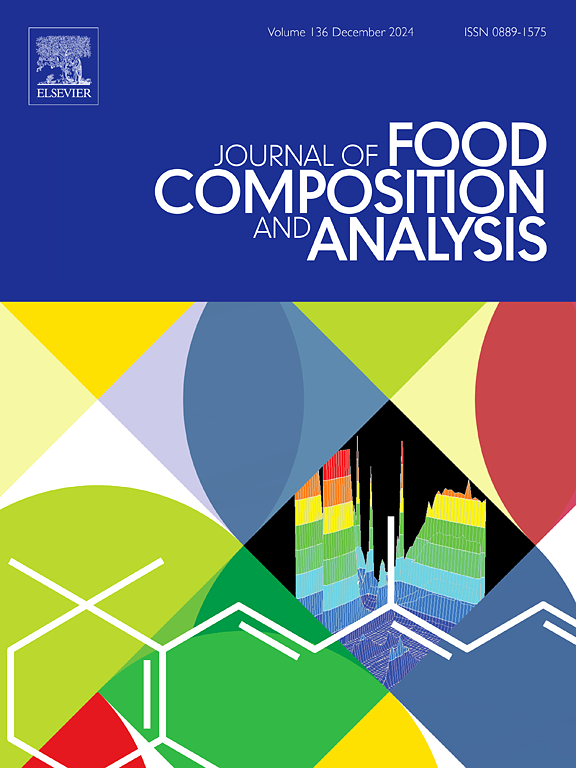Dispersive solid phase extraction of Irganox 1010, Irgafos 168, and Irganox 1076 from milk samples using carbon derived metal-organic framework
IF 4
2区 农林科学
Q2 CHEMISTRY, APPLIED
引用次数: 0
Abstract
A dispersive solid-phase extraction method has been developed for the extraction of Irganox 1010, Irgafos 168, and Irganox 1076 from milk samples using carbon-derived MIL-88(Fe) as an efficient sorbent. To achieve this, 5 mL of milk sample was mixed with 100 mg trichloroacetic acid under vortexing for 3 min. After deprotonating of the sample, the analytes were extracted using 10 mg of carbon-derived MIL-88(Fe). The extraction procedure was accelerated by vortexing (for an addition 3 min). After centrifugation, the adsorbed analytes onto the sorbent were eluted with 125 µL of ChCl: 1,4-butanediol deep eutectic solvent and then analyzed using HPLC-DAD. The influences of different factors affecting the extraction efficiency of the studied antioxidants were evaluated. Under the optimized conditions, the proposed method demonstrated low limits of detection (0.19–0.63 ng mL−1) and quantification (0.63–1.1 ng mL−1), as well as acceptable extraction recoveries above 73 % for migration compounds. Ultimately, this approach was competently applied to evaluate the presence of studied additives in twenty-five milk samples packaged in polyethylene. Notable features of this procedure include minimal usage of sorbent, absence of toxic organic solvent, and negligible matrix effect. Subsequently, the validated analytical method was applied to several cow milk samples, revealing contamination in some of the investigated samples. The effect of storage temperature and time was also investigated.
利用碳衍生金属有机框架从牛奶样品中分散固相萃取Irganox 1010、Irgafos 168和Irganox 1076
本文章由计算机程序翻译,如有差异,请以英文原文为准。
求助全文
约1分钟内获得全文
求助全文
来源期刊

Journal of Food Composition and Analysis
工程技术-食品科技
CiteScore
6.20
自引率
11.60%
发文量
601
审稿时长
53 days
期刊介绍:
The Journal of Food Composition and Analysis publishes manuscripts on scientific aspects of data on the chemical composition of human foods, with particular emphasis on actual data on composition of foods; analytical methods; studies on the manipulation, storage, distribution and use of food composition data; and studies on the statistics, use and distribution of such data and data systems. The Journal''s basis is nutrient composition, with increasing emphasis on bioactive non-nutrient and anti-nutrient components. Papers must provide sufficient description of the food samples, analytical methods, quality control procedures and statistical treatments of the data to permit the end users of the food composition data to evaluate the appropriateness of such data in their projects.
The Journal does not publish papers on: microbiological compounds; sensory quality; aromatics/volatiles in food and wine; essential oils; organoleptic characteristics of food; physical properties; or clinical papers and pharmacology-related papers.
 求助内容:
求助内容: 应助结果提醒方式:
应助结果提醒方式:


